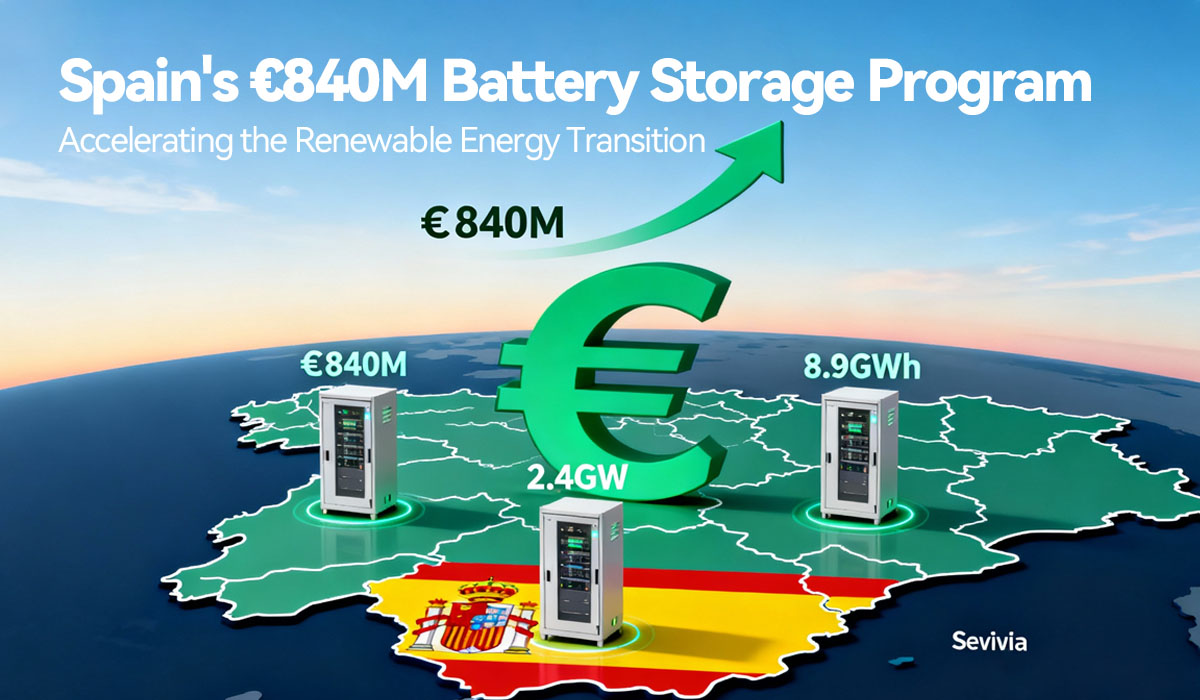Blog
Blog
Smart Grid Storage Costs Explained: Lithium-Ion, Flow Batteries & More
Published by Dawnice, November 1, 2025
As the world transitions towards renewable energy, smart grids have become essential technology for managing electricity supply and demand. However, one of the most frequently asked questions is: What is the actual cost of different storage systems? This article provides an in-depth analysis of the costs, advantages, and suitable applications of various energy storage technologies, helping homeowners, business owners, and energy enthusiasts make more economical and informed choices.
? Why Energy Storage Systems are Crucial for Smart Grids
Smart grids rely on energy storage systems to balance the supply from renewable sources like solar and wind with user demand. Without storage, excess energy is wasted, and power shortages can lead to blackouts.
Choosing the right storage system can save costs, improve power supply reliability, and contribute to sustainable development.
⚡ Lithium-Ion Batteries: The Market Benchmark
Lithium-ion batteries are the most common storage solution today, thanks to their high efficiency and continuously declining costs. They are widely used in residential and commercial solar storage systems.
? Key Cost Factors
- Initial Investment: Medium to high level, but prices have dropped by over 80% in the past decade
- Lifespan: Typically 10-15 years, with 2,000-6,000 cycles
- Maintenance Requirements: Low, requiring almost no special maintenance
✅ Advantages
- High energy density and efficiency (up to 95%)
- Fast response time, suitable for frequency regulation
- Strong scalability, applicable from household to grid-level scales
⚠️ Challenges
- Raw material costs fluctuate significantly
- Safety risks like thermal runaway require advanced management systems
Cost Range: $150-$400 per kWh, depending on scale and technology
? Flow Batteries: Ideal for Long-Duration Storage
Flow batteries excel in long-duration energy storage, making them perfectly suited for smart grids that need to store electricity for hours or even days.
? Key Cost Factors
- Initial Investment: Higher than lithium-ion batteries, but gradually decreasing
- Lifespan: Over 20 years with minimal degradation
- Efficiency Level: Approximately 70-80%, slightly lower than lithium-ion but more stable
✅ Advantages
- Excellent for grid stabilization and renewable energy integration
- Decoupled power and energy design allows flexible configuration
- Environmentally friendly with recyclable materials
⚠️ Challenges
- Higher upfront investment
- Larger system size requires more space
Cost Range: $300-$600 per kWh, potential cost savings in long-term operation
? Lead-Acid Batteries: Economical Choice for Specific Scenarios
As one of the oldest battery technologies, lead-acid batteries still play a role in specific fields due to their affordability.
? Key Cost Factors
- Initial Investment: Low, suitable for budget-limited projects
- Lifespan: Relatively short, about 3-7 years, with limited cycle life
- Maintenance Requirements: Require regular inspection and replacement
✅ Advantages
- Mature technology, easily accessible
- Suitable for backup power and off-grid systems
⚠️ Challenges
- Lower efficiency and energy density
- Environmental concerns due to lead content
Cost Range: $50-$150 per kWh, suitable for small-scale or temporary applications
? Pumped Hydro Storage: Classic Large-Scale Solution
Pumped hydro storage uses gravitational force by pumping water uphill during low demand and releasing it to generate power during peak demand. It is a mature and economical choice for large-scale energy storage.
? Key Cost Factors
- Initial Investment: Very high, but low operational costs
- Lifespan: Can exceed 50 years with proper maintenance
- Efficiency Level: Approximately 70-80%, depending on specific design
✅ Advantages
- Huge storage capacity, suitable for national grid level
- Very low levelized cost of storage in the long term
⚠️ Challenges
- Geographical constraints and environmental impact
- Long development cycles and complex approval processes
Cost Range: $50-$150 per kWh, but heavily influenced by specific site factors
?️ Cybersecurity and System Protection
As smart grids become more digital, cybersecurity becomes crucial to prevent attacks that could disrupt energy supply.
Investing in secure energy storage systems can avoid costly blackouts and data breaches.
? Key Considerations
- Use encrypted communication protocols
- Regular software updates and vulnerability assessments
- Integrate storage with robust grid management systems
Cost Impact: Adding cybersecurity features may increase initial costs by 5-15%, but the long-term savings from prevented incidents are significant
? Data Analytics and Grid Reliability
Data analytics help optimize energy storage usage, predict demand, and extend system lifespan. Through artificial intelligence and machine learning, utility companies can reduce costs and improve reliability.
? How It Works
- Real-time performance monitoring to prevent failures
- Predict energy patterns to optimize charging and discharging strategies
- Enable predictive maintenance to reduce downtime
Cost Benefits: Implementing data analytics can improve efficiency by 10-20%, providing quick return on investment
? How to Choose the Right Energy Storage System
Choosing an energy storage system isn’t just about upfront costs—it’s more about the total cost of ownership.
? Selection Steps
- Assess Energy Needs: Calculate daily electricity consumption, peak demand, and backup requirements
- Consider Lifespan and Maintenance: Cheap options may have higher long-term costs due to frequent replacements
- Evaluate Scalability: Ensure the system can grow with your energy goals
- Consider Policy Incentives: Government subsidies or tax credits can reduce renewable energy storage costs
For example, if you are installing solar panels, pairing them with lithium-ion batteries may offer the best balance between cost and performance.
? Conclusion: Smart Investments in Energy Storage
Understanding the costs of different storage systems for smart grids enables you to make informed decisions. Lithium-ion batteries lead in versatility, flow batteries excel in longevity, and lead-acid batteries remain a budget option.
By prioritizing reliability, efficiency, and total cost of ownership, you can invest in a system that saves both money and the environment.
Ready to explore energy storage solutions? Learn now how photovoltaic energy storage batteries can integrate into your smart grid strategy!








